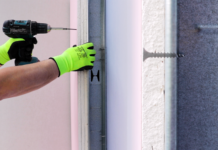When working with CNC (Computer Numerical Control) machining for parts production, understanding lead time is critical for maintaining smooth operations, meeting project deadlines, and staying on budget. Lead time in CNC parts production refers to the period from the initiation of a project to the final delivery of parts, encompassing every phase of the manufacturing process, from design to production and post-production. In this comprehensive guide, we will dive into what machining lead time involves, what factors influence it, and how to optimize your production schedules.
What Is Machining Lead Time?
Machining lead time is the amount of time it takes to produce CNC parts from the moment a customer submits an order to the moment the final product is delivered. This timeline includes several key steps:
- Design and prototyping: Developing the design and creating an initial prototype.
- Material sourcing: Acquiring the required raw materials.
- Machine programming: Setting up the CNC machines to follow the design specifications.
- Production: Actual machining of parts based on customer specifications.
- Post-processing: Additional operations such as deburring, heat treatment, or polishing.
- Inspection and quality control: Ensuring that the finished parts meet the required tolerances and standards.
- Packaging and shipping: Preparing the finished parts for delivery to the customer.
Each of these stages contributes to the overall machining lead time, which can vary greatly depending on several factors. On average, machining lead times can range from a few days for simple jobs to several weeks or even months for complex parts that require advanced materials and post-processing steps.
Factors That Affect Machining Lead Time
Understanding the factors that affect machining lead time is crucial for optimizing production and managing expectations. Here are the primary elements that influence how long CNC parts production will take:
Complexity of the Part Design
One of the most significant factors impacting machining lead is the complexity of the part design. Simple parts with straightforward geometry are faster to produce, while intricate designs with multiple features, tight tolerances, and complex geometries will take more time to machine.
Key Considerations:
- Number of machining operations required (e.g., milling, turning, drilling).
- Precision and tolerances necessary for the final part.
- Need for multi-axis machining (e.g., 5-axis CNC machining) versus simpler 2- or 3-axis jobs.
More complex parts may also require several iterations during prototyping, which increases the lead time before production begins.
Material Availability
Material sourcing is another critical factor in determining machining lead times. If the required raw materials are readily available, production can start promptly. However, if specialized or rare materials are needed, procurement may take additional time, especially if those materials must be sourced internationally.
Key Considerations:
- Availability of standard materials like aluminum, steel, or brass versus custom alloys or composites.
- Shipping times for materials if sourced from international suppliers.
- Cost and lead time for high-performance materials that may require extra processing.
Machine Availability and Scheduling
The availability of CNC machines and operators is a practical consideration that can significantly influence lead times. In high-demand periods, machining facilities may have longer queues, extending the timeline before your project can enter production.
Key Considerations:
- Machine availability and how many projects are ahead in the production line.
- Downtime for maintenance or repair, which could delay production.
- Availability of skilled operators to program and manage the machines.
In some cases, production can be expedited by running machines around the clock or using additional equipment, but this may come at a higher cost.
Post-Processing Requirements
After the initial machining process, many parts require post-processing to meet the required specifications. Post-processing steps can include heat treatment, anodizing, deburring, surface finishing, or coating. Each of these steps adds time to the production process and, in some cases, requires specialized equipment or outsourced services, which can further extend lead times.
Key Considerations:
- Type of post-processing required (e.g., surface finishes, heat treatment).
- Whether these operations can be done in-house or need to be outsourced.
- Time required for quality control inspections following post-processing.
Quality Control and Inspection
Quality control is an essential part of CNC machining, as it ensures that parts meet the precise tolerances and specifications outlined in the design. Depending on the complexity and precision required, inspection can be a time-consuming process. For parts that must adhere to stringent industry standards (e.g., aerospace or medical devices), inspection may involve additional steps, such as non-destructive testing or certification, which can add days or even weeks to the overall lead time.
Key Considerations:
- Type of inspection required (e.g., visual inspection versus advanced metrology).
- Whether third-party certification is required for the parts.
- Time required for quality assurance documentation and reporting.
Customization and Prototyping
Prototyping and customization efforts can extend the machining lead time if they require repeated iterations to fine-tune the design. Each iteration of prototyping involves the full cycle of design, machine programming, production, and inspection, making it a labor-intensive process. However, this step is crucial to ensure that the final production run meets all the necessary specifications.
Key Considerations:
- Number of prototype iterations needed before finalizing the design.
- Complexity of the custom features and how they affect machining.
- Feedback loops with the customer to approve changes and revisions.
Reducing Machining Lead Times: Best Practices
Though several factors influence CNC machining lead times, there are strategies to reduce production timelines and ensure quicker delivery without compromising on quality. Here are some tips for minimizing delays:
Simplify the Design
Wherever possible, simplifying the part design can drastically reduce machining time. For example, reducing the number of features, eliminating unnecessary tight tolerances, or using more straightforward geometries can cut down both machining and inspection time. Collaborating with your CNC shop during the design phase can also help optimize the design for manufacturability.
Choose Readily Available Materials
Selecting materials that are readily available in standard sizes and quantities can help eliminate delays related to sourcing. If custom materials are required, work with your supplier to plan ahead and factor in the additional lead time needed for procurement.
Use Local Suppliers
Whenever possible, use local suppliers for materials and post-processing services to avoid international shipping delays. Working with CNC shops that offer in-house post-processing and inspection services can also help reduce turnaround times, as it eliminates the need for outsourcing.
Plan for Production Capacity
If you’re working on a tight schedule, it’s essential to communicate with your CNC shop early in the process to understand their current production capacity. Larger shops with more machines and skilled operators may offer faster turnaround times, especially if they have the ability to run multiple shifts.
Batch Production
When feasible, producing parts in larger batches can help reduce lead times for individual parts. CNC machines are highly efficient in batch production, as the setup time is amortized over more parts, allowing for quicker overall production.
Use a Reliable CNC Shop
The reputation and reliability of your CNC machining partner play a significant role in keeping lead times under control. Choosing a partner with a proven track record of delivering high-quality parts on time will help ensure smooth production and fewer delays.
Managing Machining Lead Time
The lead time for CNC parts production depends on many variables, including part complexity, material availability, machine capacity, and post-processing requirements. By understanding these factors and working closely with your CNC partner, you can reduce unnecessary delays and ensure that your parts are delivered on time. Simplifying designs, selecting available materials, and planning for production capacity are all strategies to minimize machining lead time.
Ultimately, clear communication between you and your CNC shop is essential for meeting deadlines and avoiding bottlenecks. By working with a reliable CNC machining partner, you can stay ahead of project timelines, keeping production schedules on track and customers satisfied.
If you have any questions about machining lead times or need CNC machining services, feel free to reach out to us. We’re here to help you with every step of the process, from design to production, ensuring your parts are delivered when you need them.


































































